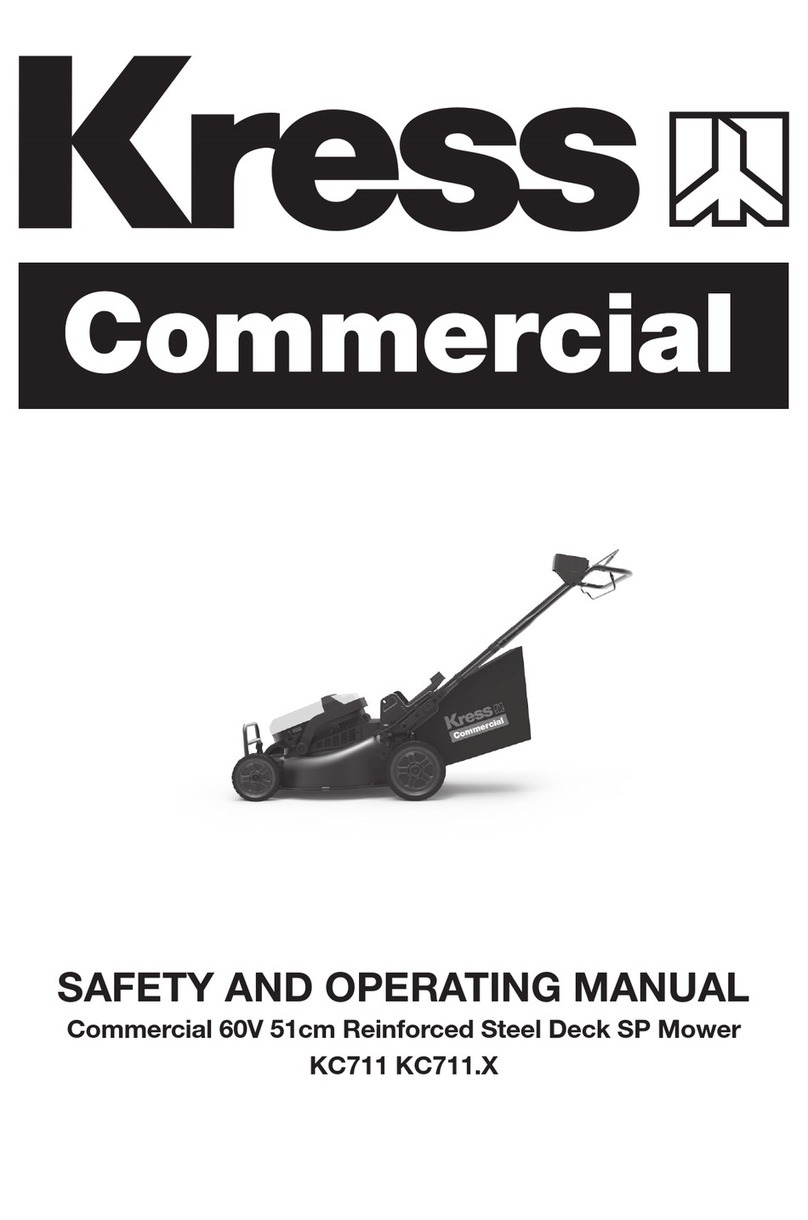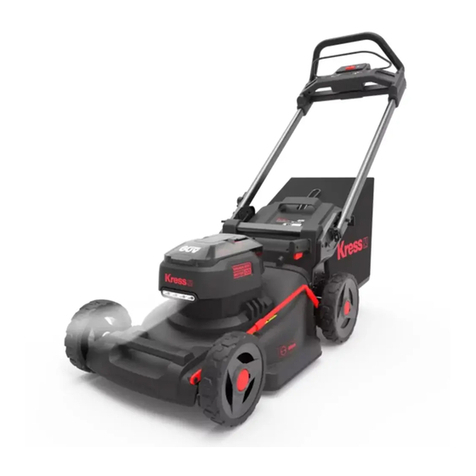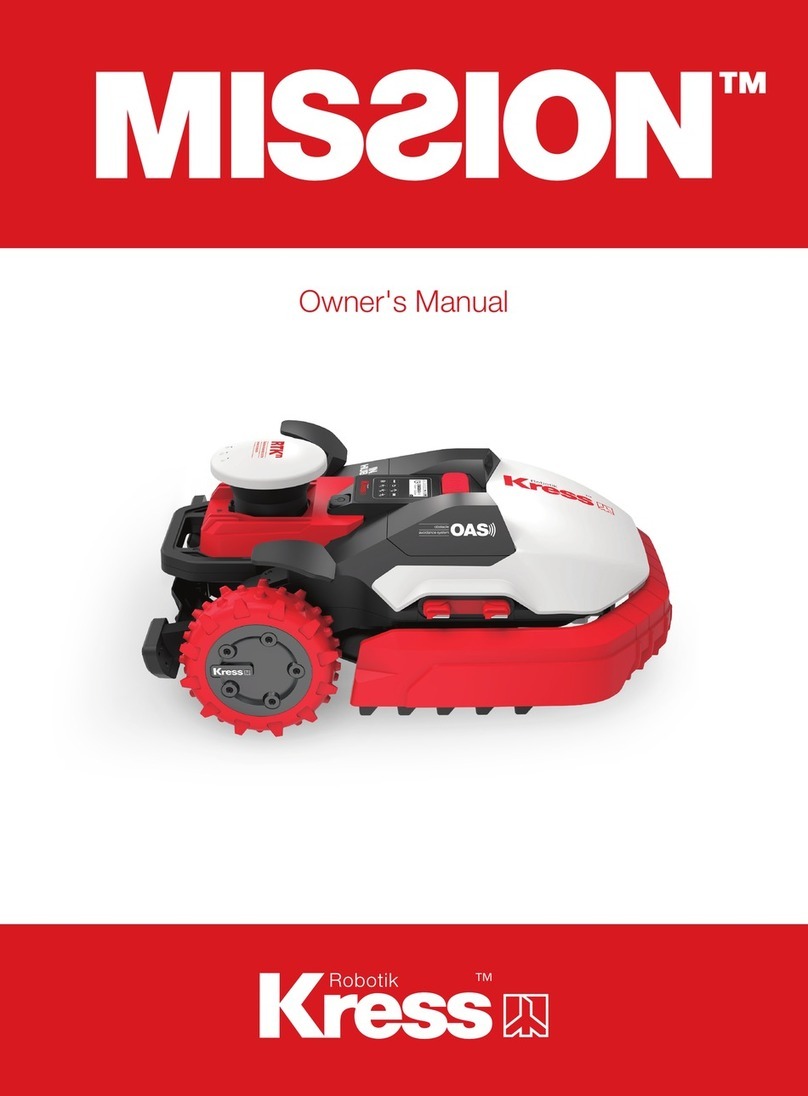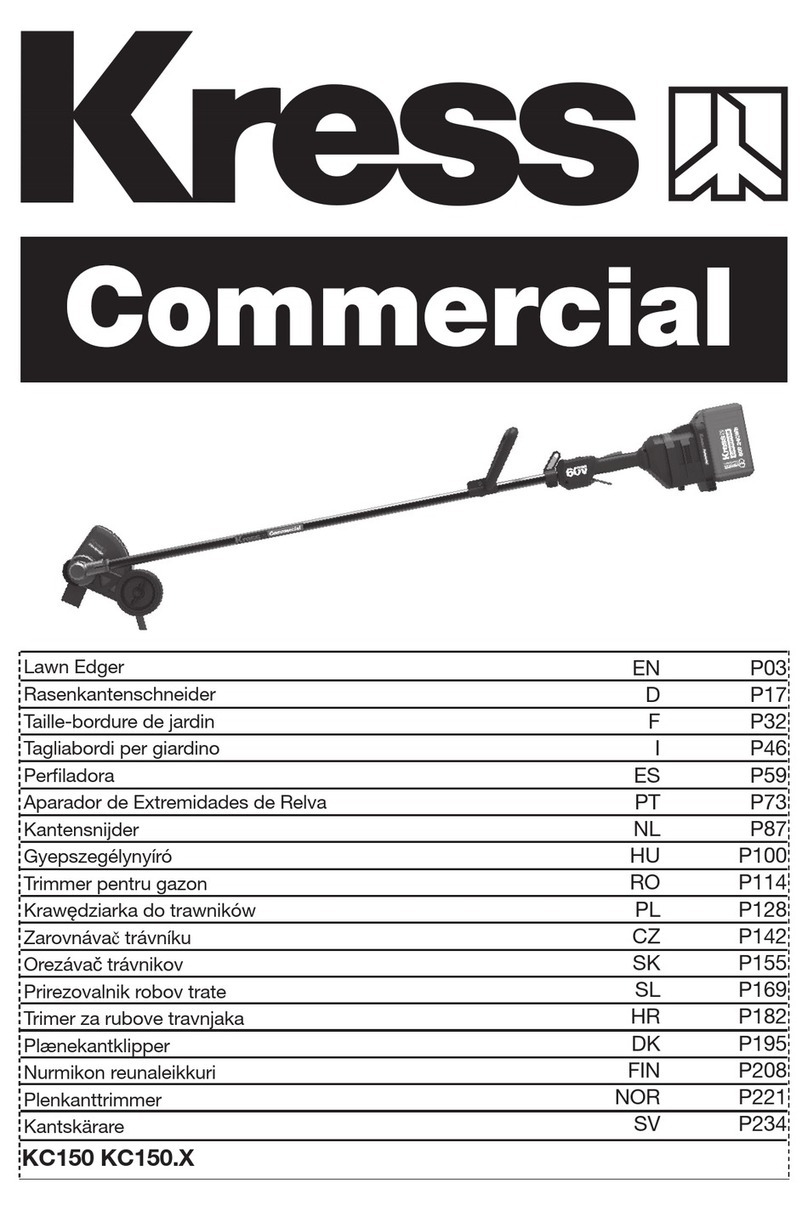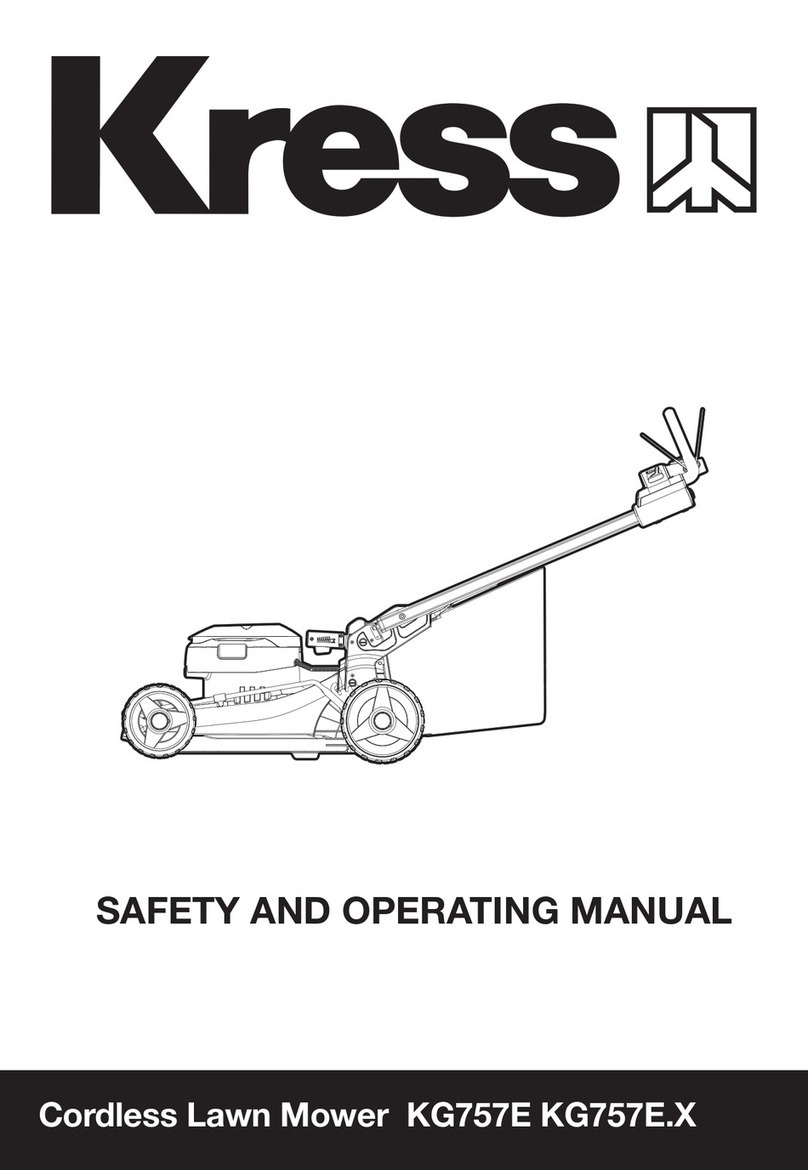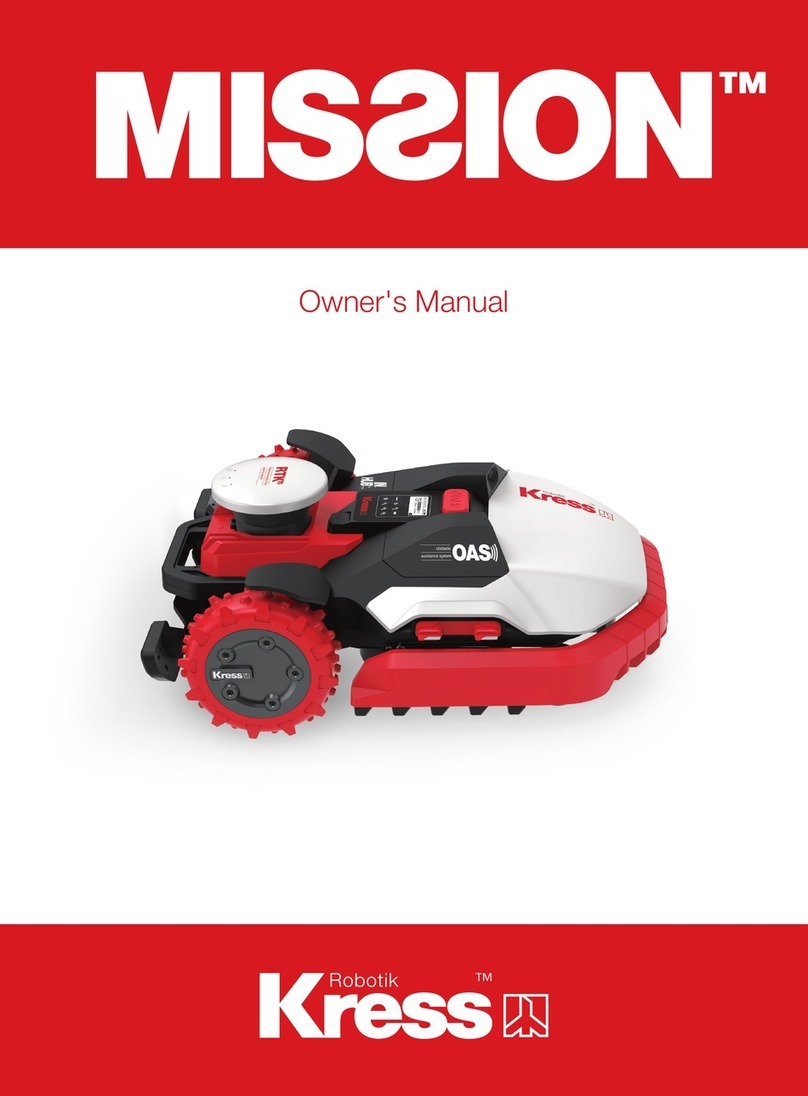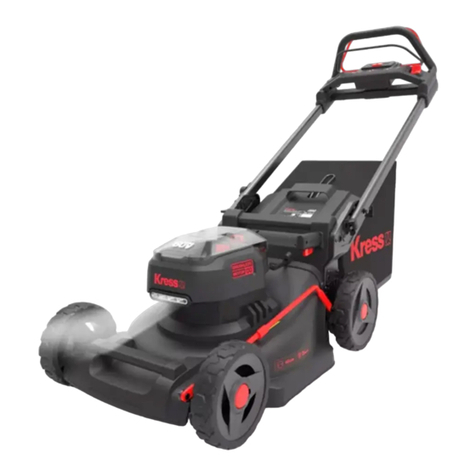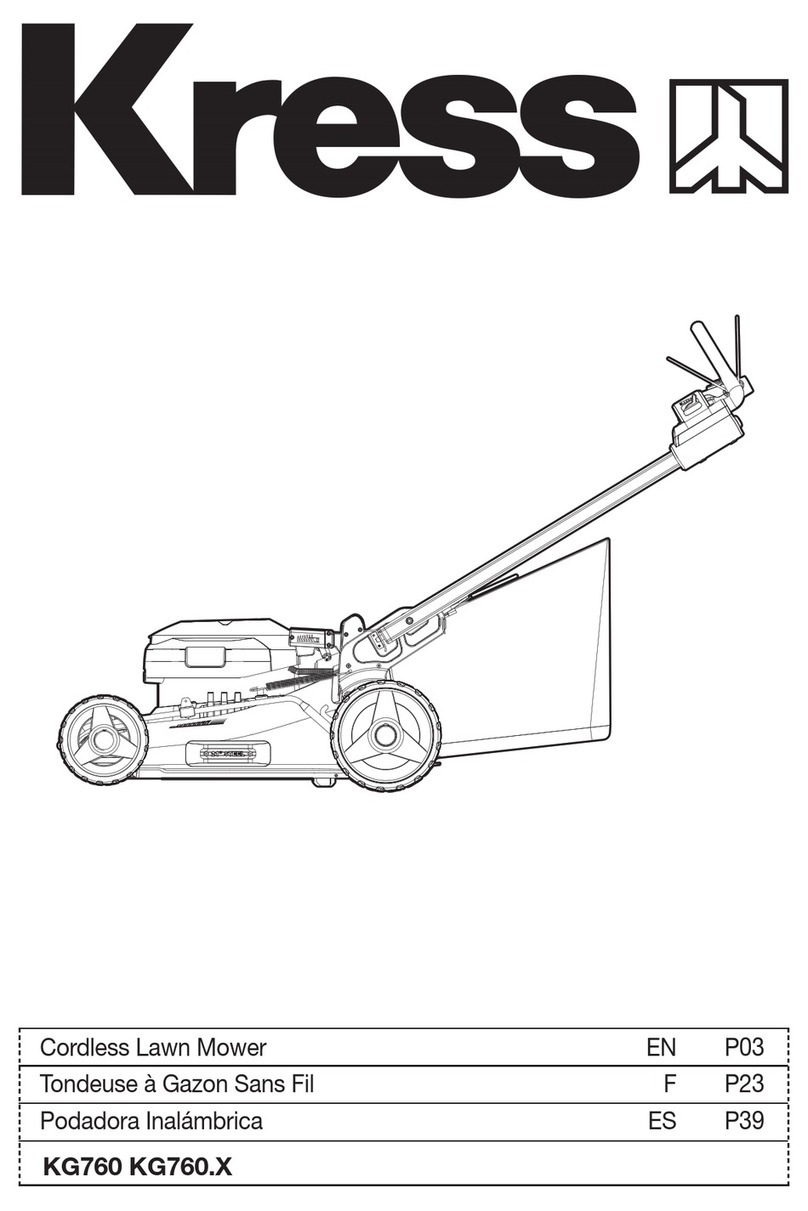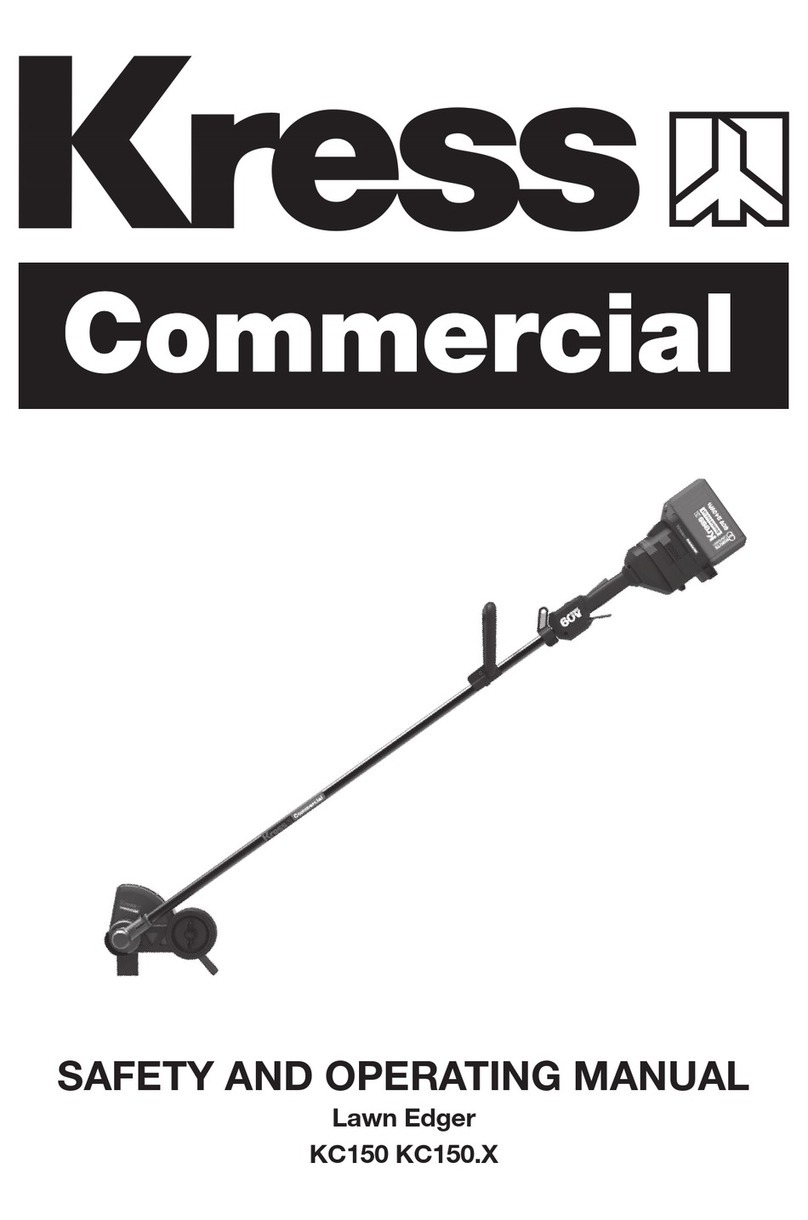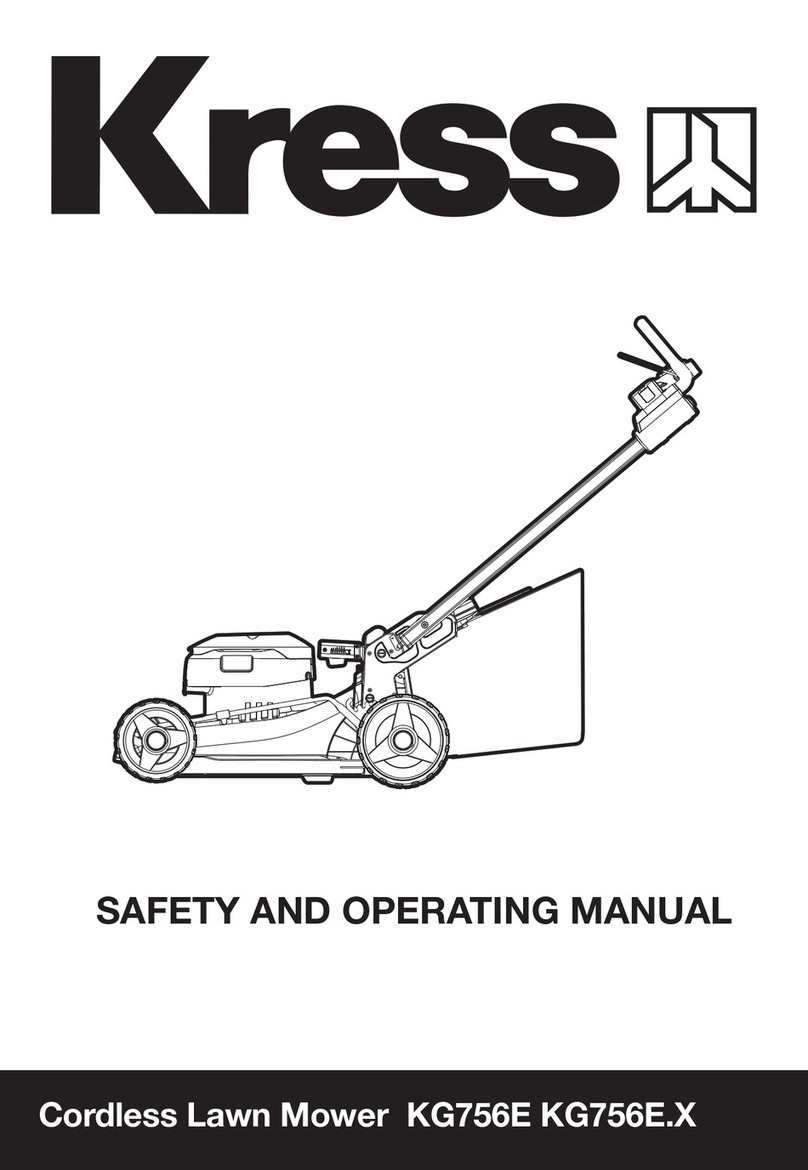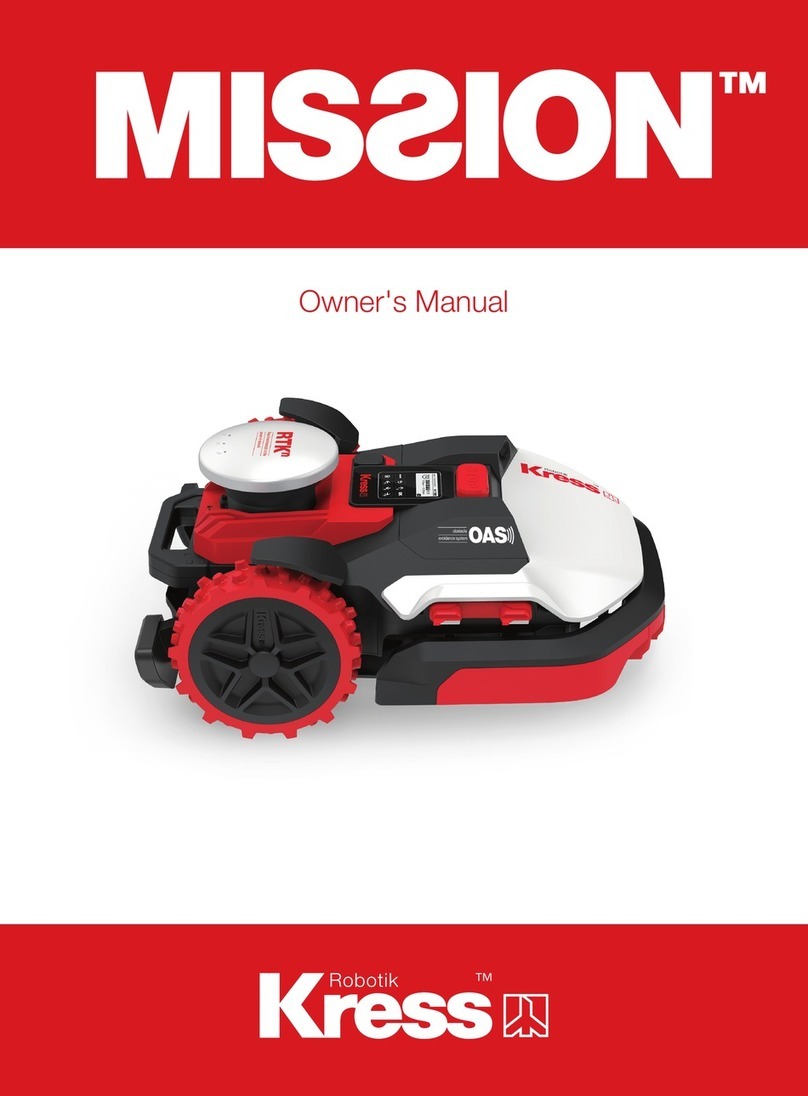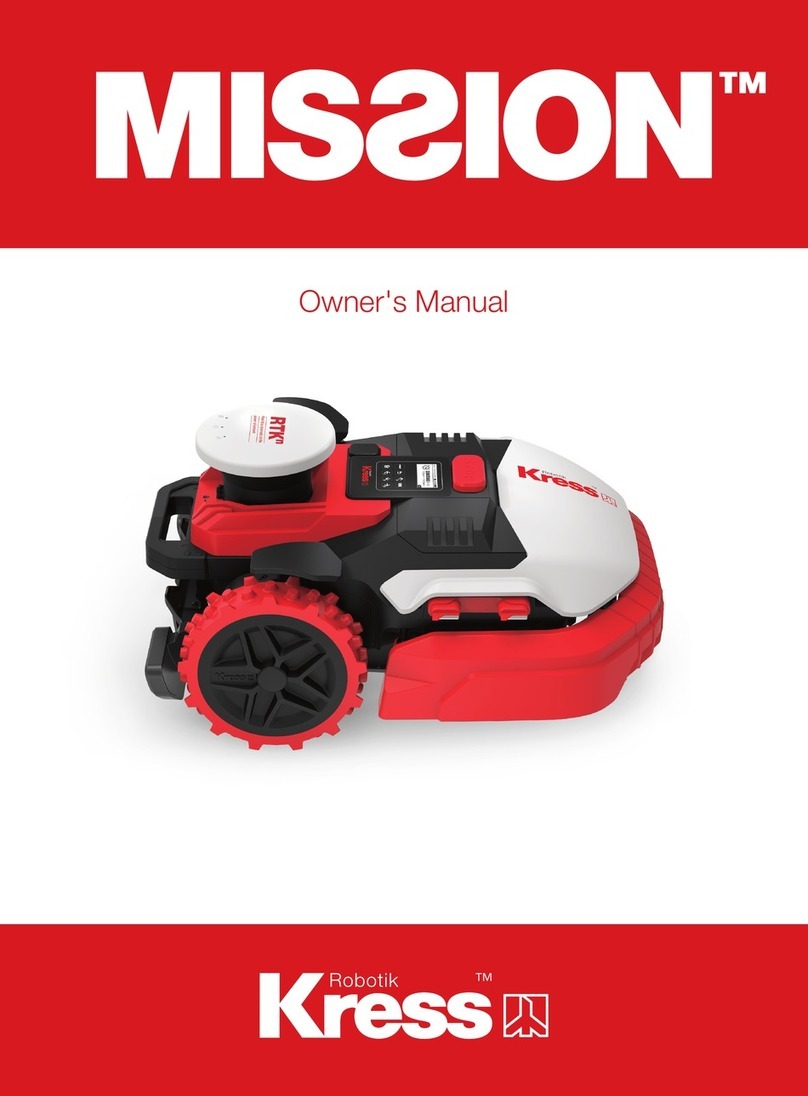
4
Cordless Lawn Mower
KG760E KG760E.X
e) Maintain power tools and accessories. Check
for misalignment or binding of moving parts,
breakage of parts and any other condition
that may affect the power tool’s operation.
If damaged, have the power tool repaired
before use.
Many accidents are caused by poorly
maintained power tools.
f) Keep cutting tools sharp and clean.
Properly
maintained cutting tools with sharp cutting edges
are less likely to bind and are easier to control.
g) Use the power tool, accessories and tool bits
etc. in accordance with these instructions,
taking into account the working conditions and
the work to be performed.
Use of the power tool
for operations different from those intended could
result in a hazardous situation.
h) Keep handles and grasping surfaces dry, clean
and free from oil and grease.
Slippery handles
and grasping surfaces do not allow for safe
handling and control of the tool in unexpected
situations.
5) Battery tool use and care
a) Recharge only with the charger specified by
the manufacturer.
A charger that is suitable for
one type of battery pack may create a risk of re
when used with another battery pack.
b) Use power tools only with specifically
designated battery packs.
Use of any other
battery packs may create a risk of injury and re.
c) When battery pack is not in use, keep it away
from other metal objects, like paper clips,
coins, keys, nails, screws or other small metal
objects, that can make a connection from one
terminal to another.
Shorting the battery terminals
together may cause burns or a re.
d) Under abusive conditions, liquid may be
ejected from the battery; avoid contact. If
contact accidentally occurs, flush with water. If
liquid contacts eyes, additionally seek medical
help.
Liquid ejected from the battery may cause
irritation or burns.
e) Do not use a battery pack or tool that is
damaged or modified.
Damaged or modied
batteries may exhibit unpredictable behaviour
resulting in re, explosion or risk of injury.
f) Do not expose a battery pack or tool to fire
or excessive temperature.
Exposure to re or
temperature above 130 °C may cause explosion.
g) Follow all charging instructions and do not
charge the battery pack or tool outside the
temperature range specified in the instructions.
Charging improperly or at temperatures outside
the specied range may damage the battery and
increase the risk of re.
6) Service
a) Have your power tool serviced by a qualified
repair person using only identical replacement
parts.
This will ensure that the safety of the power
tool is maintained.
b) Never service damaged battery packs.
Service
of battery packs should only be performed by the
manufacturer or authorized service providers.
LAWNMOWER SAFETY
WARNINGS
a) Do not use the lawnmower in bad weather
conditions, especially when there is a risk of
lightning. This decreases the risk of being struck
by lightning.
b) Thoroughly inspect the area for wildlife where
the lawnmower is to be used. Wildlife may be
injured by the lawnmower during operation.
c) Thoroughly inspect the area where the
lawnmower is to be used and remove all
stones, sticks, wires, bones, and other foreign
objects. Thrown objects can cause personal injury.
d) Before using the lawnmower, always visually
inspect to see that the blade and the blade
assembly are not worn or damaged. Worn or
damaged parts increase the risk of injury.
e) Check the grass catcher frequently for wear or
deterioration. A worn or damaged grass catcher
may increase the risk of personal injury.
f) Keep guards in place. Guards must be in
working order and be properly mounted. A
guard that is loose, damaged, or is not functioning
correctly may result in personal injury.
g) Keep all cooling air inlets clear of debris.
Blocked air inlets and debris may result in
overheating or risk of fire.
h) While operating the lawnmower, always wear
non-slip and protective footwear. Do not
operate the lawnmower when barefoot or
wearing open sandals. This reduces the chance
of injury to the feet from contact with the moving
blade.
i) While operating the lawnmower, always wear
long trousers. Exposed skin increases the
likelihood of injury from thrown objects.
j) Do not operate the lawnmower in wet grass.
Walk, never run. This reduces the risk of slipping
and falling which may result in personal injury.
k) Do not operate the lawnmower on excessively
steep slopes. This reduces the risk of loss of
control, slipping and falling which may result in
personal injury.
l) When working on slopes, always be sure of
your footing, always work across the face of
slopes, never up or down and exercise extreme
caution when changing direction. This reduces
the risk of loss of control, slipping and falling which
may result in personal injury.
m) Use extreme caution when reversing or pulling
the lawnmower towards you. Always be aware
of your surroundings. This reduces the risk of
